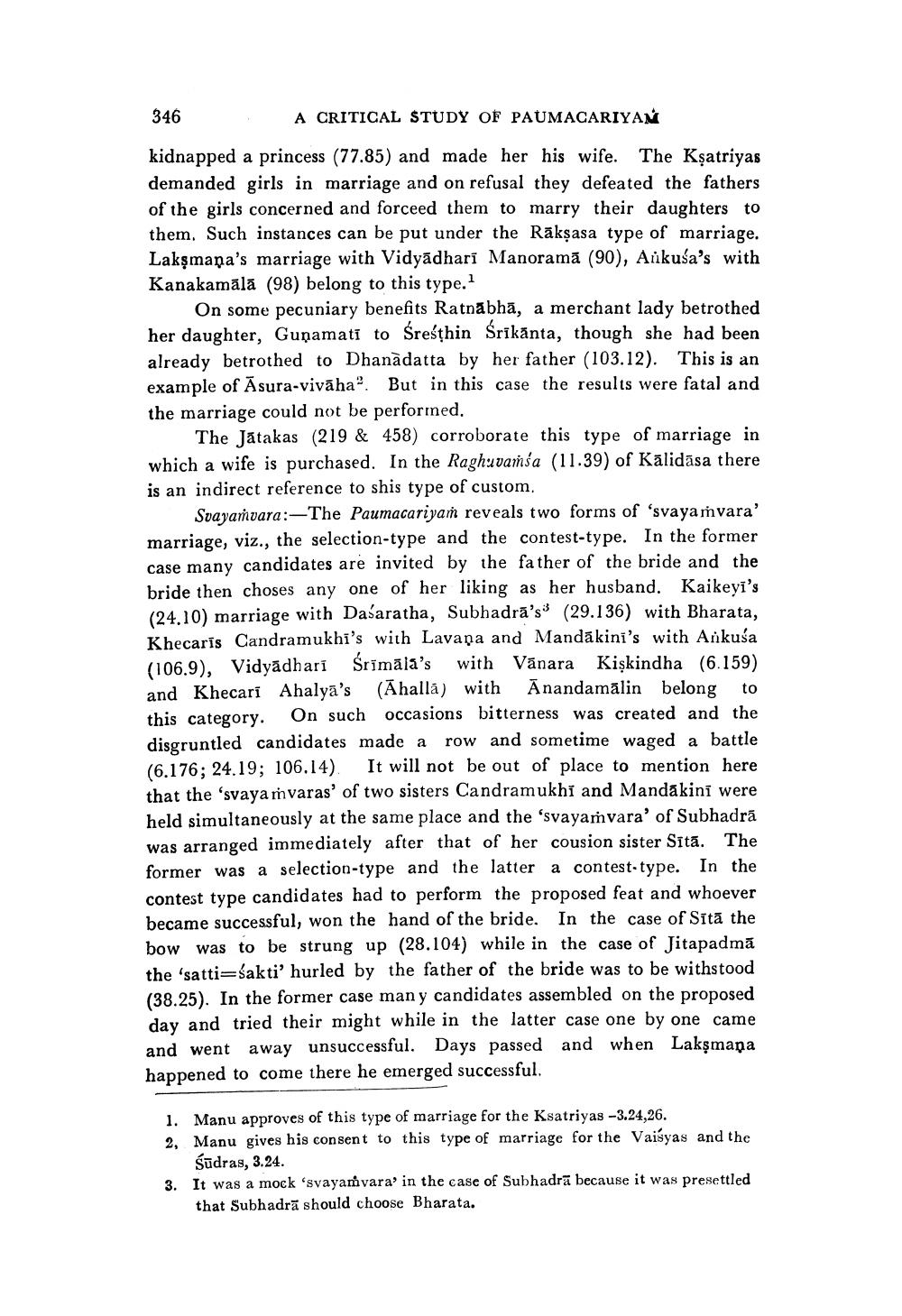________________
346
A CRITICAL STUDY OF PAUMACARIYAM
kidnapped a princess (77.85) and made her his wife. The Kṣatriyas demanded girls in marriage and on refusal they defeated the fathers of the girls concerned and forceed them to marry their daughters to them. Such instances can be put under the Rākṣasa type of marriage. Laksmana's marriage with Vidyadharī Manorama (90), Aikusa's with Kanakamālā (98) belong to this type.1
On some pecuniary benefits Ratnābhā, a merchant lady betrothed her daughter, Gunamati to Śreśthin Śrīkānta, though she had been already betrothed to Dhanadatta by her father (103.12). This is an example of Asura-vivaha". But in this case the results were fatal and the marriage could not be performed.
The Jatakas (219 & 458) corroborate this type of marriage in which a wife is purchased. In the Raghuvamsa (11.39) of Kalidasa there is an indirect reference to shis type of custom.
Svayamvara:-The Paumacariyam reveals two forms of 'svayamvara' marriage, viz., the selection-type and the contest-type. In the former case many candidates are invited by the father of the bride and the bride then choses any one of her liking as her husband. Kaikeyi's (24.10) marriage with Dasaratha, Subhadra's (29.136) with Bharata, Khecaris Candramukhi's with Lavapa and Mandakini's with Ankusa (106.9), Vidyadhari Śrīmāla's with Vanara Kişkindha (6.159) and Khecari Ahalya's (Ahalla) with Anandamālin belong On such occasions bitterness was created and the
to
this category.
disgruntled candidates made a row and sometime waged a battle (6.176; 24.19; 106.14). It will not be out of place to mention here that the 'svayamvaras' of two sisters Candramukhi and Mandakini were held simultaneously at the same place and the 'svayamvara' of Subhadra was arranged immediately after that of her cousion sister Sītā. The former was a selection-type and the latter a contest-type. In the contest type candidates had to perform the proposed feat and whoever became successful, won the hand of the bride. In the case of Sita the bow was to be strung up (28.104) while in the case of Jitapadma the 'satti sakti' hurled by the father of the bride was to be withstood (38.25). In the former case many candidates assembled on the proposed day and tried their might while in the latter case one by one came and went away unsuccessful. Days passed and when Lakṣmaṇa happened to come there he emerged successful.
1. Manu approves of this type of marriage for the Ksatriyas -3.24,26.
2, Manu gives his consent to this type of marriage for the Vaisyas and the Śūdras, 3.24.
3. It was a mock 'svayamvara' in the case of Subhadra because it was presettled that Subhadra should choose Bharata.




